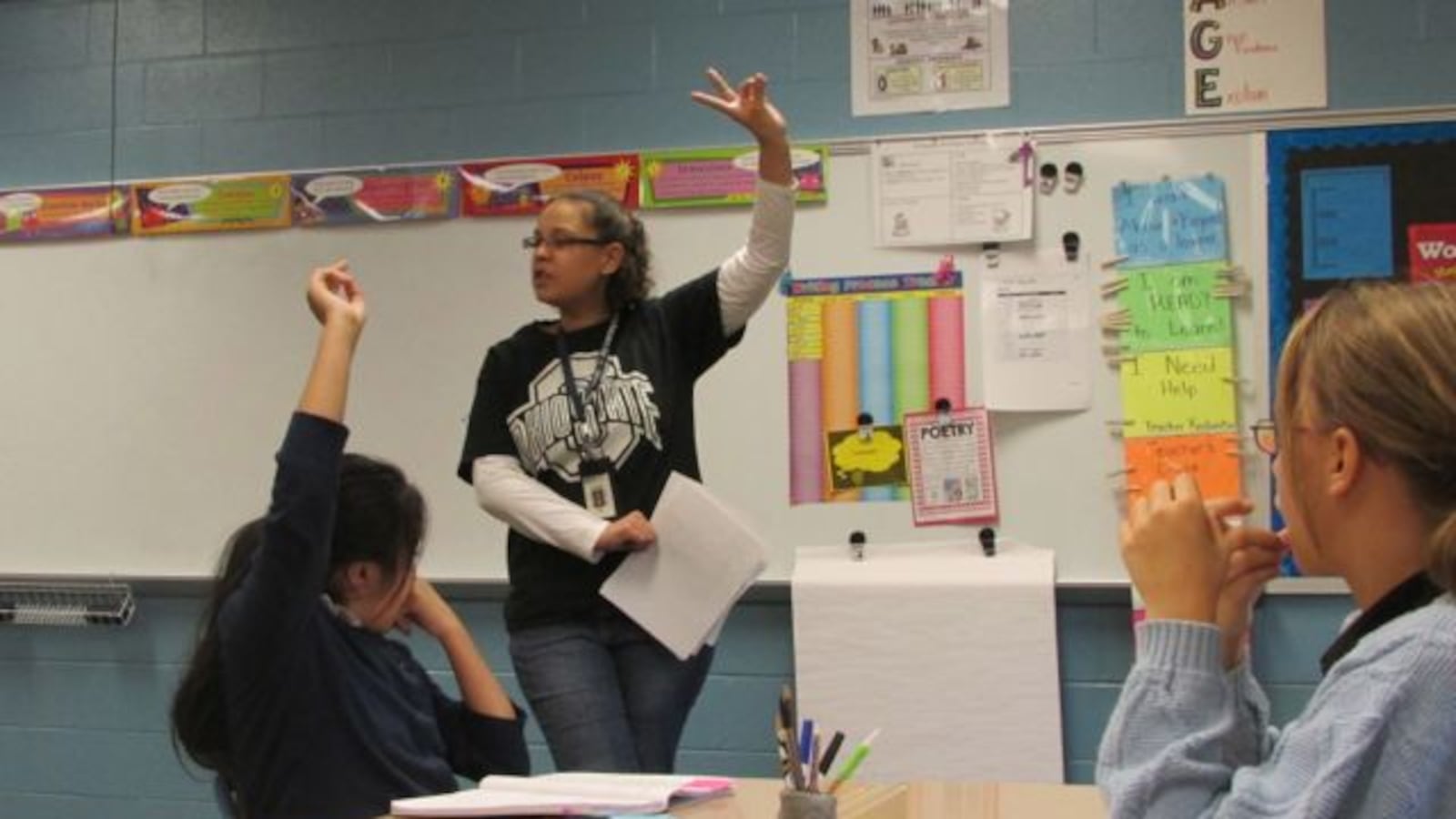After Key Learning Community opened on Indianapolis’ east side in 1987, the school quickly became famous, appearing everywhere from CBS and NBC national news broadcasts to major publications like Life Magazine and the New York Times.
Drawing on the psychological theory called Multiple Intelligences, developed by the Harvard professor Howard Gardner, the school aimed to help kids discover what interested them, how they learned best, and what sorts of projects they could undertake to expand their understanding of core subjects. In keeping with the Multiple Intelligences idea, which argues that humans have different kinds of capabilities, rather than one general intelligence, students were encouraged to study academic subjects while also developing their visual, musical and interpersonal skills.
Over time, Key made a regular appearances in the footnotes of research articles, cited as one of the best real-world manifestations of Multiple Intelligences theory applied to schooling.
Yet by 2012, Key was in serious trouble. Its once-solid test scores had plummeted, then stayed low. Teachers worried about rumors that the school might even be closed.
Searching for explanations, some pointed to the school’s changing demographics. Since 1987, the school’s students had become considerably more poor. The rise of the school accountability movement, with its emphasis on proving success through standardized test scores, also seemed to pose a possible threat to a school that valued creativity as much as basic skills.
But since 2012, an ambitious young principal, Sheila Seedhouse, has helped the school achieve a remarkable shift in academic performance—without letting go of Key’s “Multiple Intelligences” spirit or changing the kinds of students the school serves.
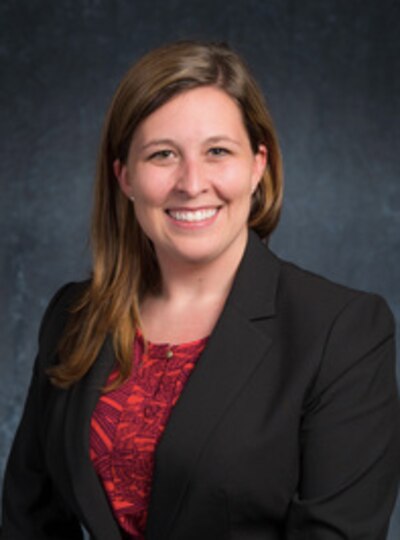
Seedhouse’s approach seems to be working. The school, which serves 410 students in all grades, from kindergarten through 12th, earned an F from the state for its high school students’ performance in 2012-13, but its middle schoolers earned a C, and the elementary school earned a B after consecutive F’s going back to 2005.
The grade reflected a jump in the portion of Key third through eighth graders scoring proficient on state tests to 57 percent in 2012-13 from 36 percent in 2011-12.
A world-renowned program
Gardner, the father of the Multiple Intelligences theory, was not trying to redesign schools when he published Frames of Mind, his seminal book, in 1983. Gardner, a psychologist, attempted categorize human behaviors that he felt qualified as “intelligence.”
He originally identified seven: visual-spatial, bodily-kinesthetic, musical-rhythmic, interpersonal, intrapersonal, linguistic, and logical-mathematical. Every person, he theorized, possessed a unique mix of strengths and weaknesses in each category. Gardner also pushed back on standardized testing, arguing that it mostly measured just two types of intelligence.
A group of IPS teachers who read Frames of Mind made a pilgrimage to meet Gardner at a speaking engagement in Pennsylvania in 1984, proposing the idea of building a school around the intelligences. Gardner told them he’d never thought of using the theory that way.
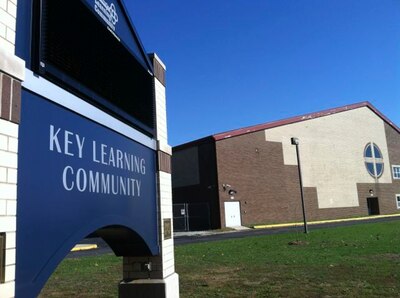
The Key school opened with 150 students in grades K to 6 in 1987, with Gardner’s blessing, to national media attention as a worldwide first. Among the features of the program was time when students could explore interests in any of the intelligences areas, according to a 2007 Phi Delta Kappan magazine story. In one class, students trained for a half marathon, keeping journals and tracking statistics on their running. In another, a student created her own puppet show to conquer her fear of public speaking.
In 1999, Geoff Davis had just quit teaching out of frustration after 15 years. He had no plans to return until a friend persuaded him to apply at Key, promising it was different.
Davis is an artist and musician who loves to use his art to liven up his classroom lessons. That was increasingly impossible by the time he quit his job at a suburban Carmel elementary school, he said.
“I love teaching but I had been completely burned out by the demand for high test scores and lack of any creative outlet,” he said.
But Key proved to be different.
“It was all about creativity,” he said. “I was encouraged to bring my art and music into the classroom. I could paint during prep period. I thought it was too good to be true.”
Projects were central to the curriculum. Students made art, wrote songs, and planted gardens, all with the goal of learning about math, science, history, and literature while doing something they loved. Many of his students, he said, were the children of politicians, artists, and other high-profile community members. The kids came to school ready to learn, and their families bought into the school’s approach.
In the late 1990s, about 45 percent of students were poor enough to qualify for free or reduced lunch, and more than half the students passed the state ISTEP tests in both English and math. By comparison, the district was much poorer overall, with about 70 percent qualifying for free or reduced-price lunch in 2000. Districtwide, fewer than 40 percent of students passed ISTEP.
The result mirrored Indianapolis’s economic achievement gap: in the same period, Key exceeded the school district’s passing rate in its goals for test score growth. The school was a gem, one that IPS liked to show off.
Poverty’s impact
In the years after he arrived at Key, David watched as the kids began to change. Their families were less wealthy and often unfamiliar with Key’s traditions.
The shift happened quickly. In 2003, 51 percent of the students were poor enough to qualify for free lunch, a 10-percentage point jump from five years earlier. Five years later, the percentage of students on free or reduced-price lunch jumped another 18 percentage points higher to 73 percent poor in 2008. Today nearly twice as many students at Key, 87 percent, are poor.
Parents were once energized and involved at Key, lining up for parent-teacher conferences. But with a different population, fewer and fewer were showing up, and the declining interest snowballed, Davis said.
“It caused flight,” he said. “Students who had been there were soon gone.”
Rebecca Counts, who teaches third and fourth graders, came to Key in 2009 and watched the freedom students were given fail to have the desired effect.
“It worked really well for a long time when you have student investment and parents involved,” she said. “When the clientele shifted, changes weren’t made to what was being done to still be effective.”
Test scores dropped below 40 percent passing ISTEP by 2002 and below 30 percent in 2007.
The students’ needs were different, Davis said, and Key wasn’t meeting them.
“We can blame it on a dozen things,” he said. “The point is the novelty wore off. We started getting kids who were being kicked out of other schools. It got very bad very fast.”
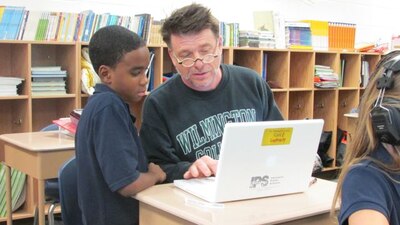
The teachers remained dedicated to the school’s philosophy and its carefully crafted program of study— sometimes too dedicated, according to Davis.
“We were so tied to those precepts we were completely resistant to changing,” Davis said. “When we started to understand, we didn’t react fast enough.”
Despite Key struggles, some teachers resisted changes.
“There was some elitism too,” Davis said. “We didn’t feel like we had to do things differently.”
The district struggled for a solution. Before Seedhouse was hired, the school was restaffed twice, forcing teachers to reapply and installing new leadership.
Counts said by 2011 there was a real worry the school wouldn’t survive, prompting a openness to new ideas among some, but not all, teachers.
“The big goal was to make sure the school did not shut down,” she said. “We needed staff and students on board with the new changes.”
The 26-year-old principal
Seedhouse was working in Chicago Public Schools in 2011 when she responded to an Indianapolis Public Schools search for a new principal.
A graduate of Butler University who majored in biology, as well as an alumnus of Teach For America, she had been drawn back to town for a TFA-supported fellowship that offers summer study for an education masters degree at Columbia University in return for a promise to lead a school in Indianapolis.
She made IPS an intriguing pitch. She would both preserve Key’s historic tradition—and make the school compete where it was failing, in the 21st-century world of high-stakes expectations.
Enacting its authority to “reconstitute” the school, IPS had moved to hire Key a new principal with authority to hire or fire teachers as they saw fit.
Key was coming off two years out of three with less than 30 percent of elementary school students passing ISTEP, including an all-time low of 23 percent passing in 2009.
The opening intrigued Seedhouse, who began researching Multiple Intelligences. One of her Columbia professors even put Seedhouse in touch with Gardner, who teaches at Harvard University.
Incorporating different strategies for helping students learn into classroom instruction was a good strategy for teachers, she thought.
“What jumped out at me was these were things I had tried in my classroom because I knew it was best for kids,” Seedhouse said. “I just didn’t know the research behind it. It made a lot of sense to me. It just seems like what good teachers should be doing.”
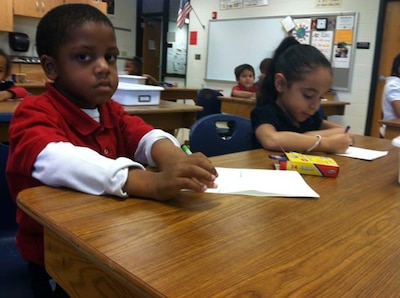
She also liked the idea of working for IPS, believing those who want to change schools need to go where the need is greatest.
But looking at Key’s test data, it was clear the school program wasn’t working the way Seedhouse believed it could.
“What we needed to look at was how we marry Multiple Intelligences with the expectations of academic rigor for foundational skills for students,” she said. “How do you get the academic results while still fostering the various intelligences?”
News of Seedhouse’s selection was less than warmly received by the staff.
“Terrifying,” is how Geoff Davis, who had taught at key for 14 years, termed her announcement.
Seedhouse was only 26 years old, and she’d never taught at a school like Key. She had also participated in Teach for America, a non-profit group that recruits recent college graduates to teach in high need schools and an organization that some veteran teachers blame as aiming to recruit inexpensive replacements for them.
“Teachers thought Seedhouse would simply dump them and the theory on which they built the school,” Davis said.
But halfway through Seedhouse’s second year, Key has managed to stay true to the spirit of Key’s original approach while making big test gains.
Davis said he fully expected to be fired by Seedhouse, as some of his colleagues were. Today he is shocked to find himself not only teaching in the school, now located on the west side of downtown on the banks of the White River, but also championing Seedhouse’s program.
“It’s the kind of teaching thought I would hate,” he said. “But I don’t, because she is a great leader.”
The challenge
Even Gardner, the inventor of Multiple Intelligences theory, has cautioned against the way some education advocates of his ideas have translated them simply to mean students should be given freedom to learn in different ways.
The theory, Gardner has said, is a theory of cognition, not a theory of learning.
“On the basis of research in several disciplines, including the study of how human capacities are represented in the brain, I developed the idea that each of us has a number of relatively independent mental faculties, which can be termed our “multiple intelligences,” Gardner wrote for the Washington Post in October.
Gardner wrote that he was trying to rebut the notion that the brain can be thought of one big computer with a single intelligence.
“In contrast, a belief in multiple intelligences assumes that we have a number of relatively autonomous computers—one that computes linguistic information, another spatial information, another musical information, another information about other people, and so on,” he wrote for the Post.
Gardner has been careful not to endorse much of the Multiple Intelligences-inspired curricula that critics have maligned as de-emphasizing more rigorous schoolwork in order to spend more time on tasks deemed creative. Critics fear that a project focus reduces attention to core subjects like math and English in favor of fuzzier self-directed study.
Daniel T. Willingham, a professor of psychology at the University of Virginia, wrote in 2004 that efforts to apply the theory to education have been counterproductive.
“For educators, the daring applications forwarded by others in Gardner’s name (and of which he apparently disapproves) are unlikely to help students,” he wrote. “All in all, educators would likely do well to turn their time and attention elsewhere.”
In some Multiple Intelligences-inspired schools, the philosophical underpinnings of the education program include a presumption that standardized tests are poor measures of student learning. Perhaps it’s no surprise, then, the low test scores among those schools are not unique to Key.
Branton Shearer is an expert in multiple intelligences and a former Kent State University professor who now consults with schools that follow the theory on the very problem Key faced—how to raise test scores without junking the program.
“You can do both, but it takes a Herculean effort,” he said. “Something has to give. You can’t be pure one way or another.”
Balancing the program means taking a hard look at everything students are doing to assure the activities promote learning and impact necessary skills, Shearer said.
It’s tough to justify some of the activities Key students did in the past, like tracking their running times or making puppet shows, if they weren’t mastering basics like math and reading. Lessons have to foster creativity and address academic needs at the same time, he said.
Shearer compares Key to Blackberry, the company which famously pioneered the smart phone only to be passed by competitors.
“They had a great product, so what happened?” Shearer said. “The needs of the population changed and it was tough to keep up. In schools, it can be tough to accept that you have to build those basic school smarts for how to be a student or you can’t have great projects that are meaningful.”
Seedhouse set about reshaping the staff and the course of study.
She pored over test data for every Key teacher. About half them were replaced, nine of them with Teach for America participants. But some of her best hires, she said, were veterans like Davis.
“Geoff had proven results in the classroom,” she said. “He thought all kids could learn. He was self-reflective on the things he knew he needed to work on as a teacher.”
What Davis and others taught had to change, too, and nothing was off limits.
Projects, a hallmark of the instructional method, were maintained, but scaled back. Free time for students to explore their interests was kept, but also reduced and reorganized.
Reading and math were pushed to the top of the priority list.
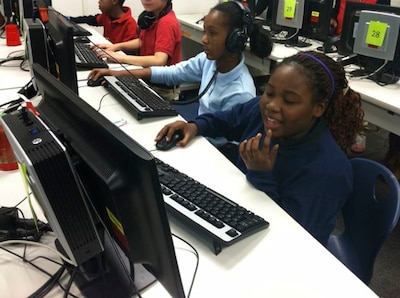
“Before, the majority of focus was on making sure kids enjoyed their learning and were doing things they liked to do,” Counts said. “That isn’t a bad thing. But the same attention wasn’t given to questions like can they read or can they do the math?”
It’s a different world at Key now, Davis said.
“I did a lot of projects,” he said. “I’m into authentic learning. If we read ‘The Phantom Tollbooth,’ we built a toll booth. We don’t do those things now. Instead teachers are collecting data like crazy.”
Key students still get concentrated time to work in each of Gardner’s intelligence areas, but instead of doing all of them each week, classes rotate four times a year. In specials like art, projects remain a focus. The lessons are carefully tied back to academic learning.
“It’s a constant balance,” Seedhouse said. “There is a tension, and some of it depends on each teacher, who their kids are each year, and what they really need.”
The tension between creativity and academic rigor is playing out on a larger scale in the national debate over Common Core standards. Common Core proponents are pushing a reconsideration of how instruction is delivered, insisting that creativity can be infused into daily lessons on core subjects, for example.
Indiana, one of the early adopters of Common Core in 2010, is now reconsidering whether it should stick with the standards or create its own at the behest of a bill passed by the state legislature last year. Some of the opponents of Common Core are skeptical of the way it proposes to change instruction, fearful that students will not learn all they need to know to succeed in college and life.
Seedhouse is reluctant to wade into the political debate over Common Core. She said she hasn’t taken a side because she doesn’t know enough yet about how Common Core relates to Indiana’s prior standards.
But she sees some parallels between the aims of Common Core and her work at Key.
“I think Common Core is a way to move students and teachers to thinking more about education as a mastery of skills, rather than the accumulation of information,” she said. “I think this does go well with the Multiple Intelligences philosophy, as it promotes students developing a meaningful understanding of information in a variety of ways.”
‘I want to learn’
By the end of last school year, teachers and students had the sense they were learning more.
Fifth grader Sanaah Diaby and her classmate, Arielle Wallace, said the school felt different before Seedhouse’s arrival.
“I knew there was no focus,” Diaby said. “I didn’t care.”
Wallace chimed in: “We were having more fun than learning. We could tell we weren’t learning a lot.”
But when the huge jump in test scores were announced this fall, they weren’t surprised.
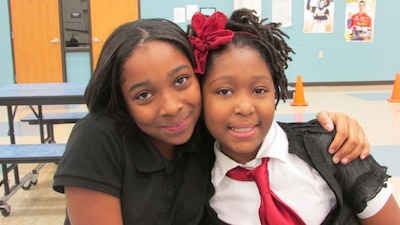
“It’s a better school,” Diaby said. “Our test scores used to be right here on the floor.” She motioned low to the ground with her hand. “Now they went way out of the building. The better our school, the higher our scores will be.”
Still, there are questions for some about aspects of the program that have been lost and whether better scores will bring a chance to revive them.
For Davis, the major revelation of Seedhouse’s reform might trouble some educators to acknowledge but now seems obvious to him: poor children need a program tailored to prioritize building foundational skills.
“You’ve got to match the population to your approach,” he said. “We weren’t spending enough time with kids in the classroom on areas they need most. Reading, math, science, and social studies were out the window. We didn’t have time for that.”
Key’s test gains have proven that refocusing the school was the right move, Davis said. Even so, he wishes his kids had more opportunities to explore their interests and get creative. That still strikes him as a more appealing part of education.
“Making those gains has made it all worthwhile,” Davis said. “I don’t know if it’s the best way to learn, but it is best way for these kids to learn. They need solid expectations and structure.”
Letting go of some favorite Key activities from years past, however, was tough. Top on Davis’ list is an eliminated class he’d like to have back called “flow.”
In the class, students were given an opportunity to select something to work on, perhaps writing a song or building a scale model. The goal is for students to learn deeply by forgetting the clock while they explore their interests.
Davis compares “flow” to the feeling he gets in his art studio.
“It was all about getting in the grove and time disappears,” he said. “Your learning just jumps.”
Count said she opposed cutting flow.
“I feel like students don’t get enough choice in school,” she said. “They should have an opportunity to discover what they like and develop their talents. Flow was a very good place for that to happen.”
In addition to taking up a lot of time, Seedhouse said, she felt flow as a class was sending kids the wrong message.
“It was inadvertently messaging kids you can only get into flow in the flow room not in the classroom,” she said. “But in theory it makes so much sense.”
Sanaah and Arielle said flow was one of their favorite classes, but perhaps for the wrong reasons.
“It was like playing games,” Arielle said. “Now we play a bit, but when we do we understand we are learning interpersonal skills.”
Sanaah looked wistful. “I really miss the games,” she said.


